TL;DR: Lamy Safari has been around since the 1980s, and it’s still the go-to starter pen in many places in Europe. It’s an iconic pen. In this comparison, the EF, F, M, and B nibs, various colors, and the occasional Safari-variant, that is, the Vista, the Al-star, and the Joy.
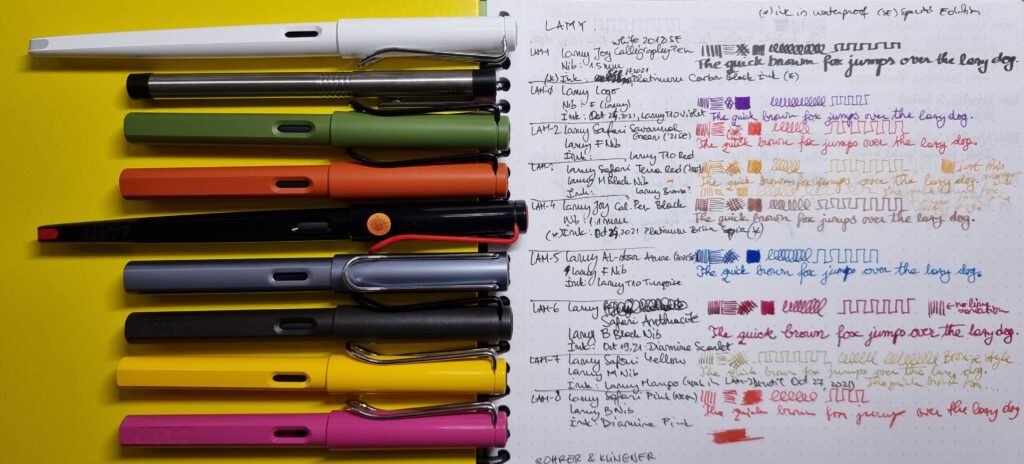
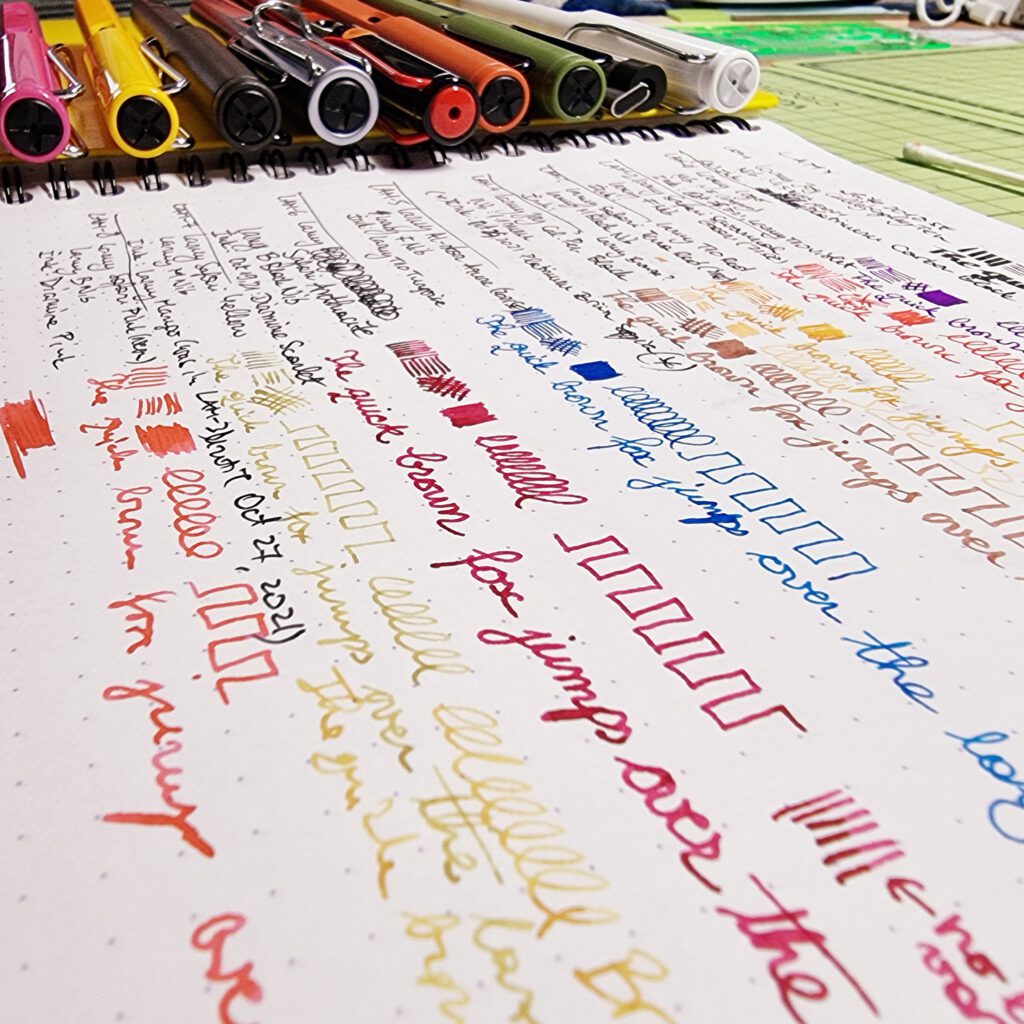
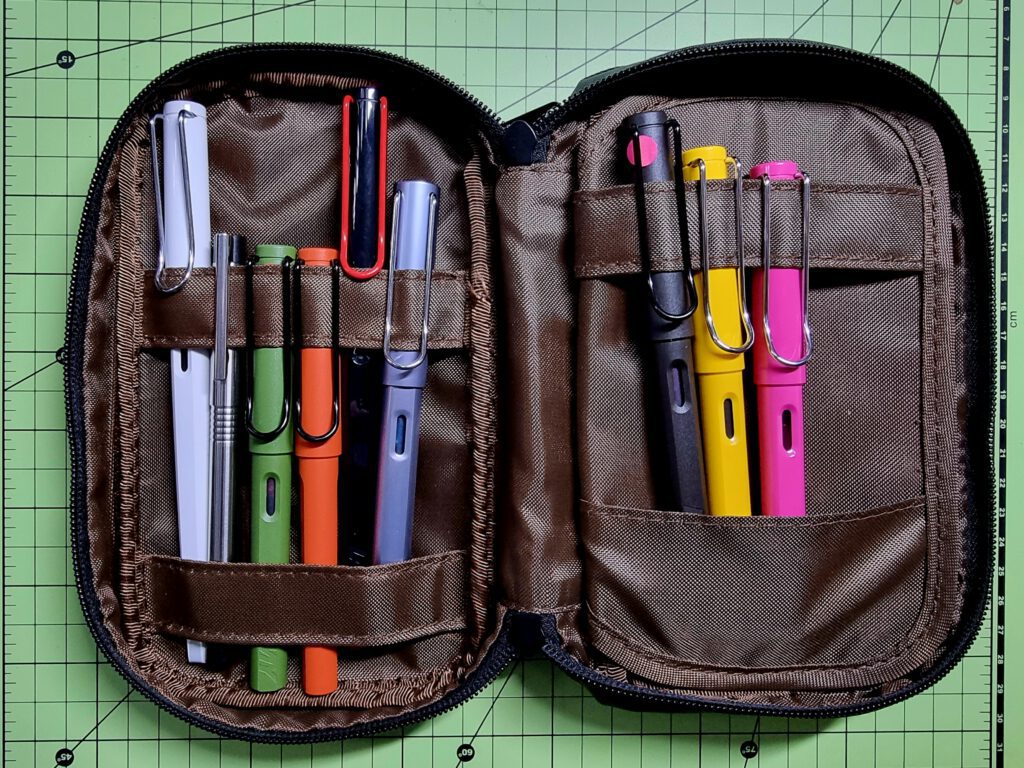
Lamy Safari, AL-star, and Joy (Figures 1a, 1b, and 1c): These sturdy, easy to use pens make for a good starter kit. I used them quite a bit in the beginning, learned the basics of inking, using, and cleaning pens. Zero trouble.
You ink these pens with a cartridge (model Lamy T10) or converter (model Lamy Z28, which repaced the Z24, is the converter with red handle; model Lamy Z27, which replaced the Z26, is the converter with black handle). Safari, vista, AL-star, and Joy can use any of these converters; other Lamy lines may be more constrained, with the Z26 acting as universal converter for Lamy pens (that take converters, because Lamy 2000 is a piston-filler and thus does not).

The Safari lineup (Figure 2): Lamy Safari comes in many colors, as does the Lamy AL-star. The Joy comes in a limited range of colors. The Lamy vista is offered only as a white (transparent) demonstrator.
But, fear not! Lamy also issues special editions (SE), typically once a year, with two new colors each issue for the Safari, two for the AL-star, and occasionally one for the Joy. For example, the Safaris to either side of the ruler are (left) the Lamy Safari SE21 Terracotta and (right) the Lamy Safari SE21 Savannah Green.
So, altogether, these are good pens to collect – lots of choice, but not overwhelming, and with steady updates. (I do not collect them myself, I just use them for various writing and drawing tasks.)
Is the Lamy Safari stylish? Opinions are mixed, but to me the Safari is a well-designed pen with a style that works. You can make works of art with it, either by it being the instrument to make art or by it being the art-subject itself.
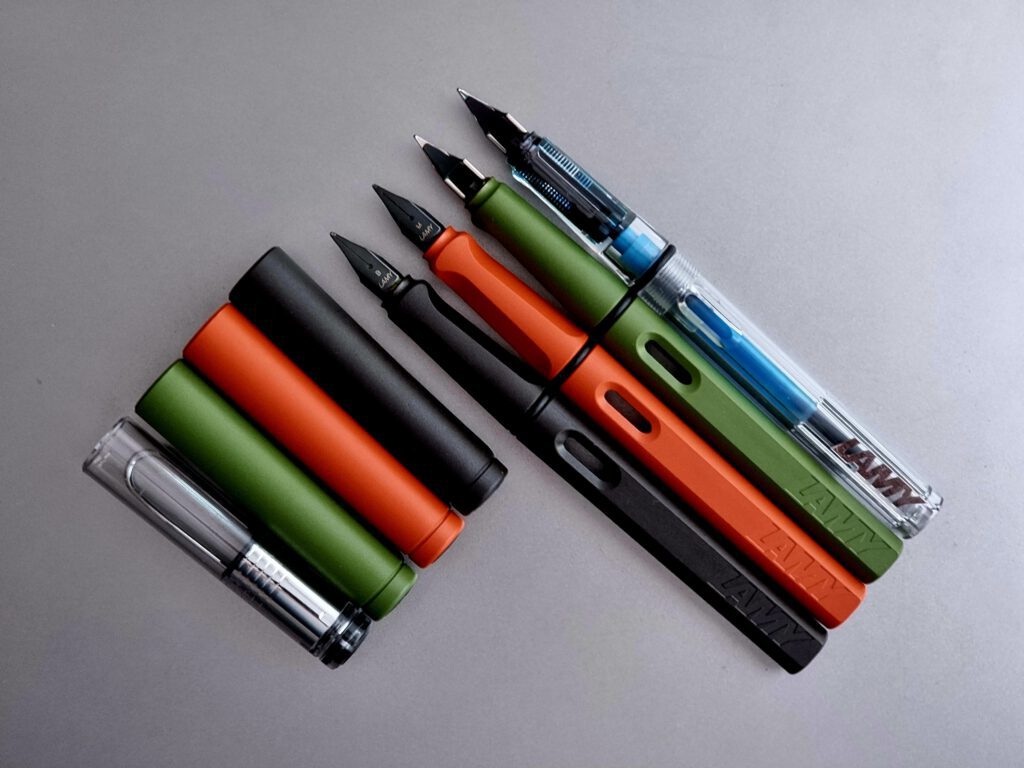

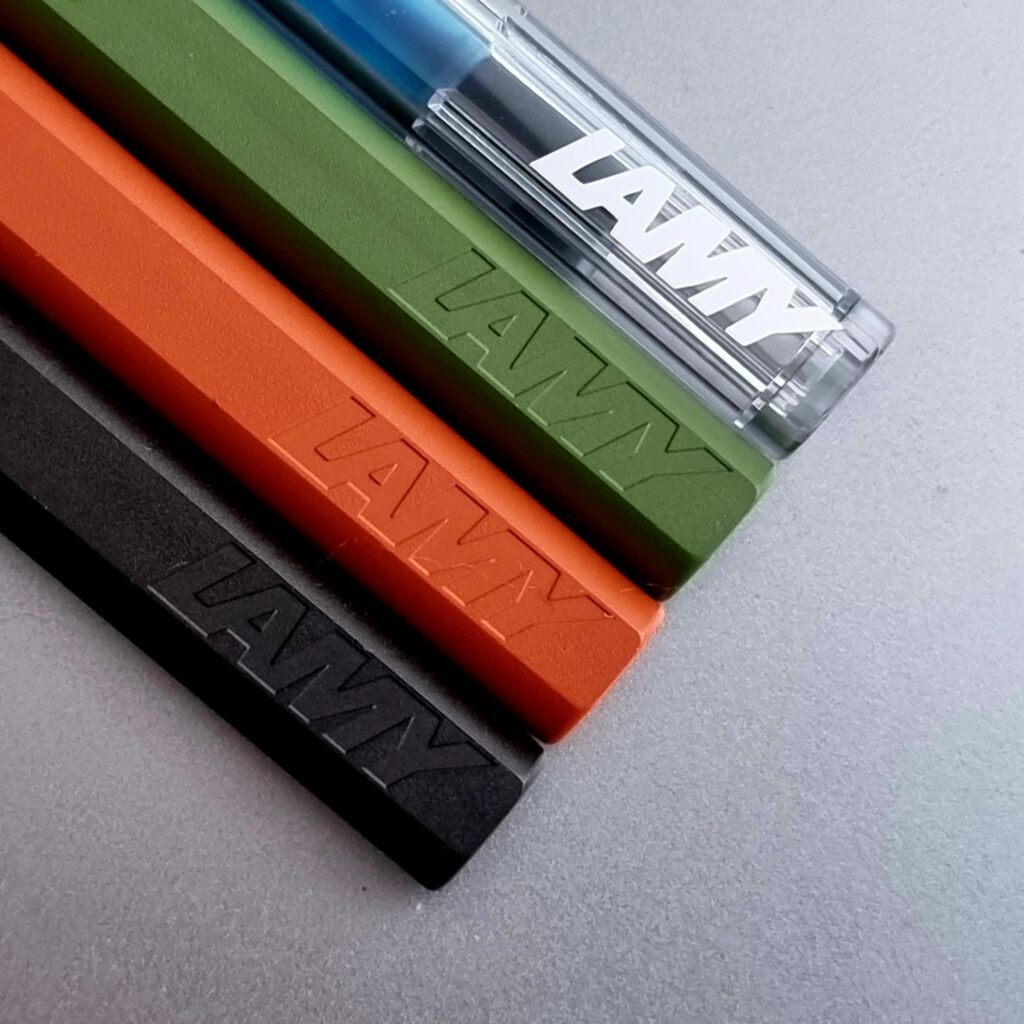
Figures 3a, 3b, and 3c present the Lamy Safari as an object of art: together, they are a study of four pens together.
The pens are, in order, the Lamy vista (transparent), the SE21 Savannah Green, the SE21 Terracotta, and the Umbra (color 17 in the Lamy lineup, a matter charcoal black).
To me, these pens give a positive vibe, an industrial look of unassuming objects meant to enhance our lives unobtrusively. I also like the colors. Up to you what you think about this art or the pens.
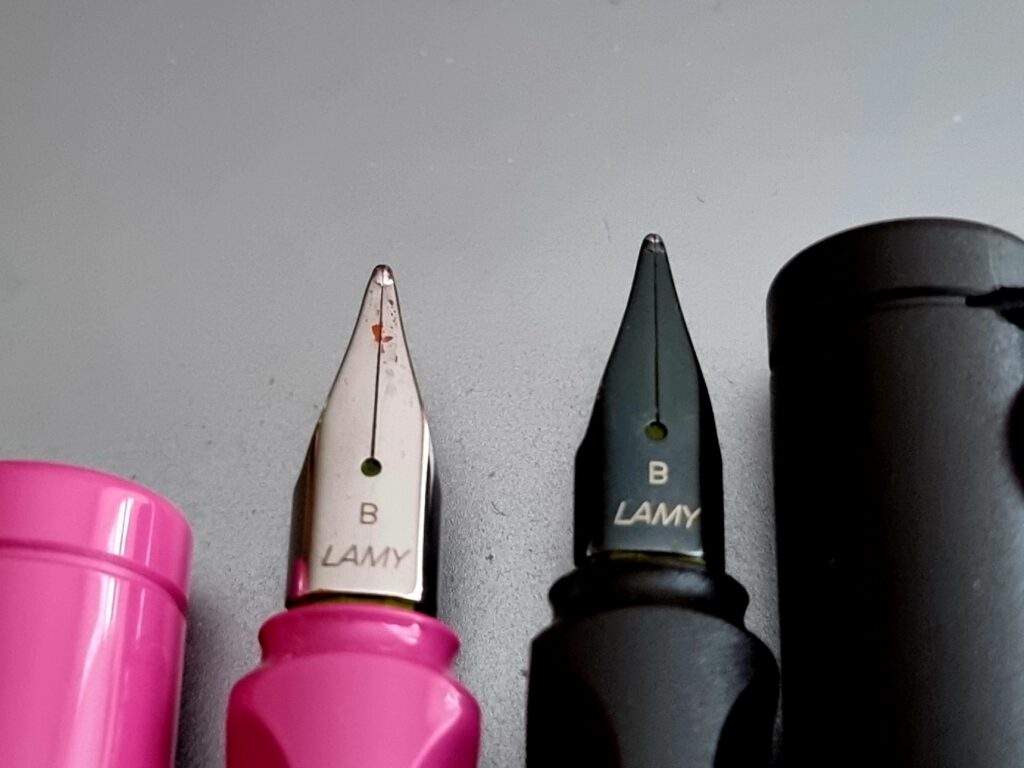


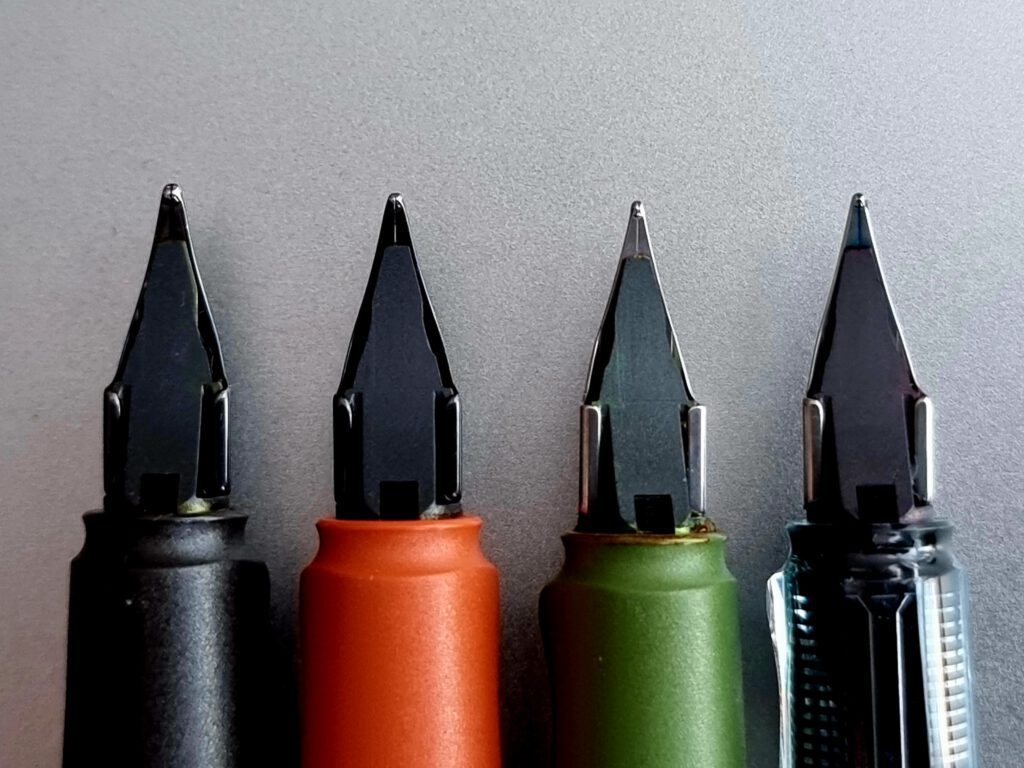
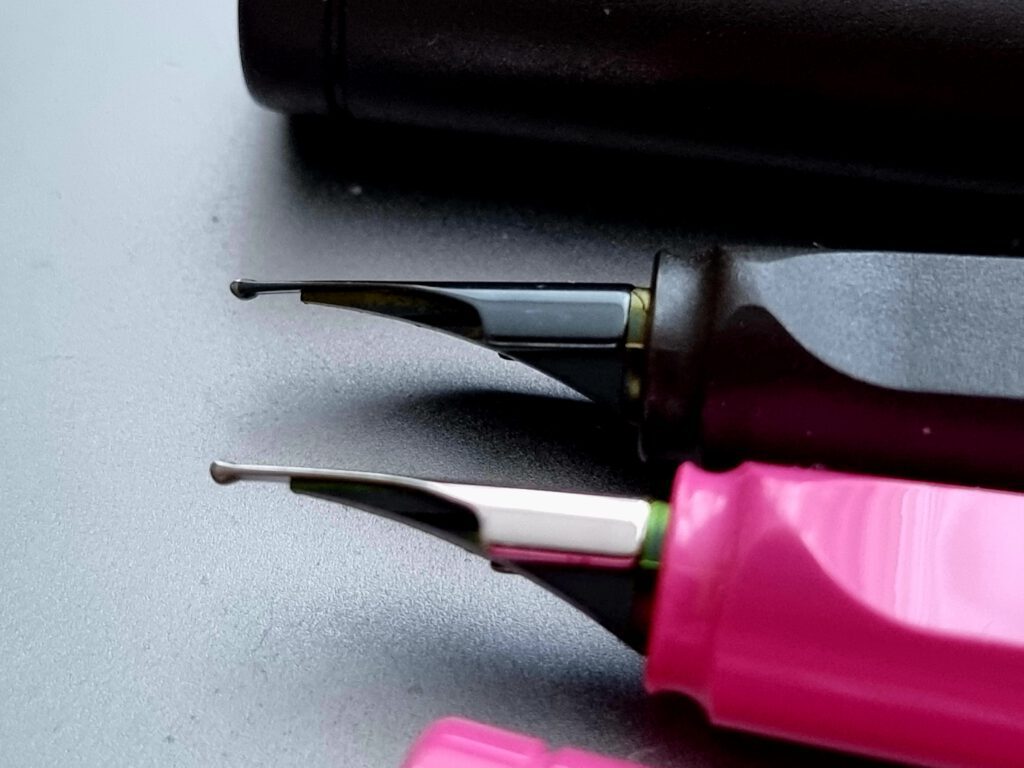
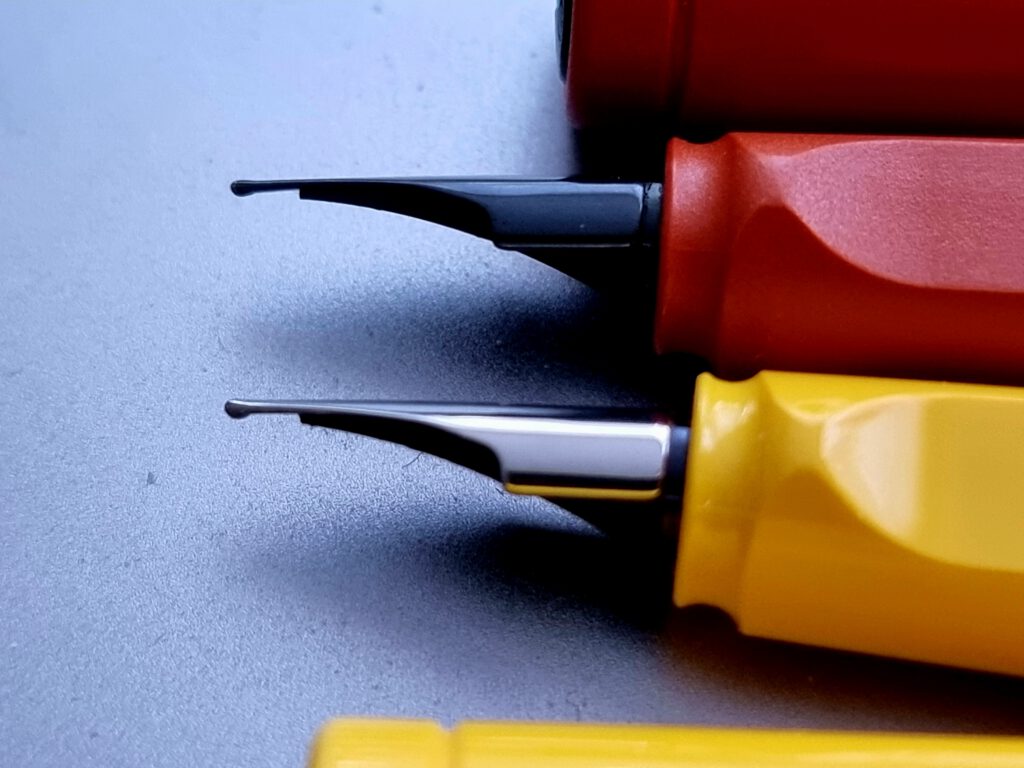

What about the nibs? (Figures 4a-4g) Lamy offers a variety of nibs through all its pens, but the steel Z50 (or Z52, supposedly better tested and smoother in writing), and 14k-gold Z57/Z58 nibs used by Safari are a bit more constrained.
Nibs can be swapped across the Safari, vista, AL-star, Joy, and others in the Lamy lineup. (Lamy 2000 forms a separate line, with a different and more diverse nib system.)
You can find steel Z50 nibs with round-tips size EF, F, M, and B, plus (especially for the Joy) 1.1 mm, 1.5 mm, and 1.9 mm stub nibs. (Starter and left-hander nibs are also available.) All Lamy nibs are good for their purpose and write out of the box.
The smaller sizes may not be as precisely grounded as one would hope, and the Lamy EF is rated by its maker to give strokes 0.36 mm +/- 0.6 mm wide; although no standard exists for these sizes across all main manufacturers, this is far from the typical Japanese EF nib (0.25-0.28 mm) and very far from the specialist needle points (0.05-0.1 mm).
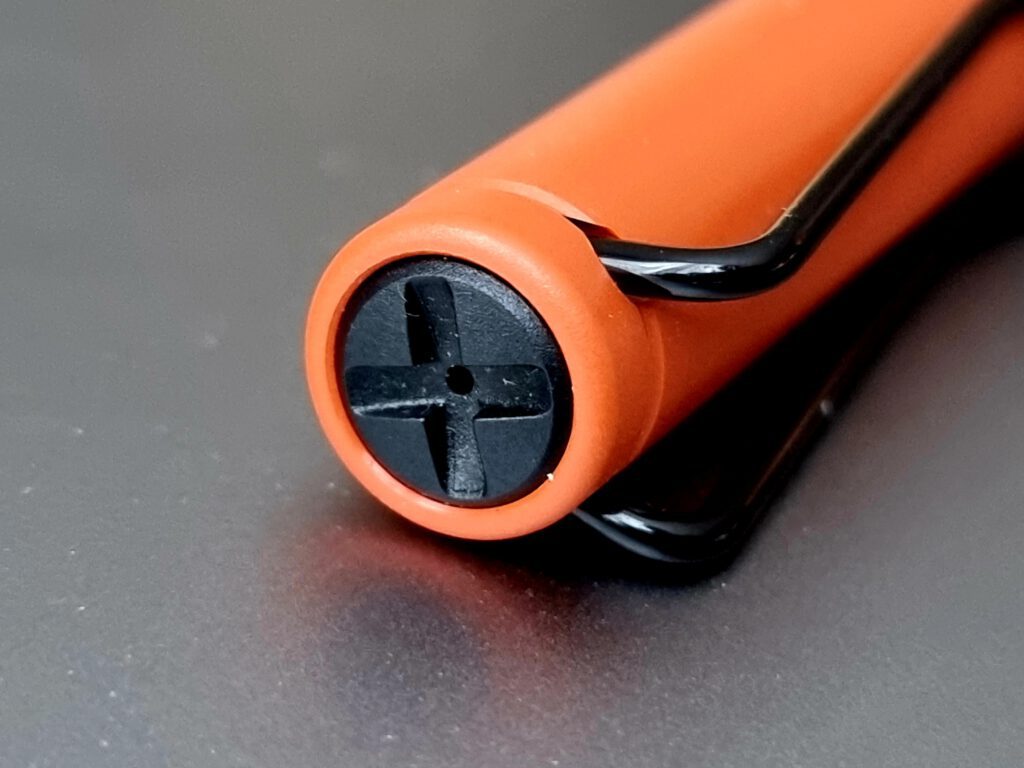


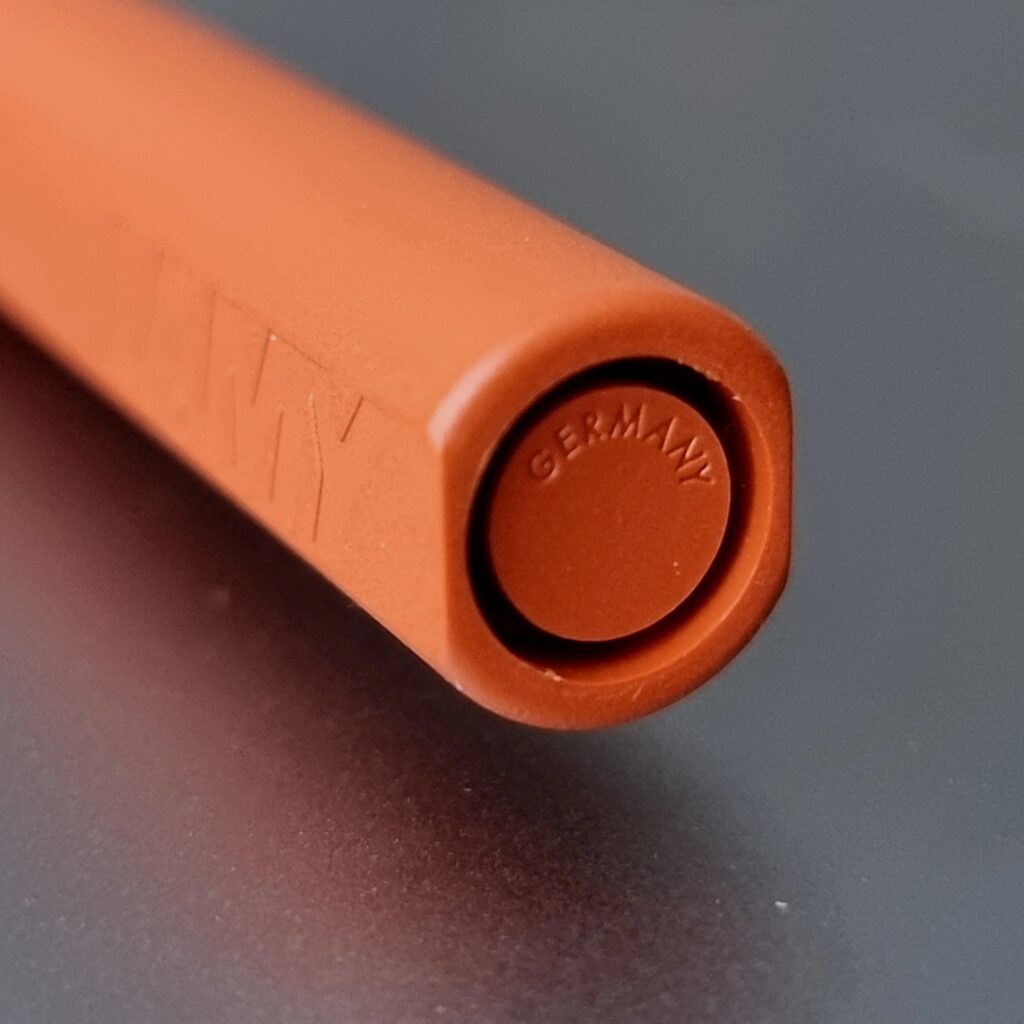
More art: study of one pen, the Lamy Safari SE21 Terracotta (Figures 5a-5d). I just like this pen!
Conclusion: The Lamy Safari is an excellent starter-pen with high-quality industrial design and manufacturing.
Enjoy the weekend!

